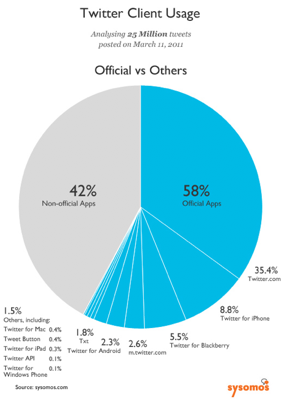Yesterday Twitter announced Fabric, a new mobile SDK for Android and iOS composed of four distinct pieces
- Crashlytics – an application analytics package that gives developers tools to measure how their apps are being used and measure app quality in the wild (i.e. crashes).
- Twitter Kit – an SDK that makes it add Twitter integration such as signing in with Twitter, embedding tweets or posting tweets from your app
- MoPub Kit – makes it easy to embed ads from Twitter’s ad network in your app so you can make money
- Digits – makes it easy for any app to build phone number based sign-in similar to what Skype Qik and WhatsApp have. This is quite frankly a game changer.
The response to this release I’ve seen online have swung between two extremes, fawning adoration from the tech press proclaiming that Twitter has moved beyond tweets into mobile services and skepticism from developers who don’t trust Twitter as represented in this tweet below
The root of this angst is Twitter’s tumultuous relationship with developers of Twitter clients which eventually led to their infamous quadrant of death post which effectively limited the growth of any app whose primary function was to be a replacement Twitter experience. This hurt many developers who had been working on Twitter reading experiences and in fact led to the CEO of Flipboard quitting Twitter’s board in disgust.
Thus it is a valid question for developers as to whether they can trust Twitter this time? The answer is Yes for a very simple reason. Twitter’s API moves in 2012 and yesterday’s announcements were borne from the same motives, to grow its primary business of selling ads tied to their mobile experiences. In 2012, they had to address the fact that their liberal exposure of their service via their API had created a situation where a huge slice of their user base were using the app through experiences Twitter could not effectively monetize.
At the height of the 3rd party Twitter app boom almost half of their users were using official apps (42%) although that percentage dwindled as they stepped up their mobile app efforts and sent the message to app developers that they no longer wanted people to compete with them on providing mobile experiences.

Taking control of the primary user experience for Twitter was the smart business decision and is why they now generate over a billion dollars a year as a business.
This brings us to Fabric. All four components aid Twitters core business of selling ads for mobile experiences.
- Twitter Kit increases engagement with Twitter by making it easy for users to consume and generate tweets from other apps without those apps being a threat to Twitter by becoming competing experiences.
- Digits allows Twitter to build a profile of users based on their phone number the same way Facebook builds a profile of users based on the apps and websites they visit that use Facebook Connect.
- Crashlytics + MoPub is the Trojan horse with a approach to Flurry which Yahoo acquired for $200 million. Crashlytics is a incredibly useful component that is valuable to all mobile apps since they all care about user behavior and crashes. Once you’re hooked on Crashlytics, it’s easier to upsell you to also using Twitters ad network and hence $$$.
All of these efforts help Twitter’s core business and it would be insanity for them to screw developers by abandoning them just as it would have been insanity for them to pursue an ad-based business model in a world where a huge chunk of their most active users were using 3rd party apps as their primary Twitter experience.
So go ahead, try out Fabric and judge it on its merits. I’m curious to hear what you think.
 Now Playing: Chris Brown – Loyal (featuring Lil Wayne and Tyga)
Now Playing: Chris Brown – Loyal (featuring Lil Wayne and Tyga) 